1. Introduction
CHINESE CHESS is one of the strategic games, which is loved by a huge number of players. Basically, this game's goal is to capture the opponent's General, which is simulated similarly to the war between two regions.
Let's discover the game and learn more about the rules with Admin!
2. How to play
There are two players in a match (you & your opponent)
The board is composed of 9 vertical lines (files) and 10 horizontal lines (ranks) with the pieces being played on the intersections. On each side of the board against the back edge is a palace, which is 3 by 3 lines (9 positions) with four diagonal lines that extend outward from the center forming an "X" shape. Dividing the two opposing sides of the board is a river, located between the fifth and sixth ranks. The river is often marked with the Chinese characters, "Chu Hé" meaning "Chu River", and, "Han Jiè", meaning "Han border", a reference to the [Chu-Han] War. Some boards have the starting points of soldiers marked with small crosses.
The board is composed of 9 vertical lines (files) and 10 horizontal lines (ranks) with the pieces being played on the intersections. On each side of the board against the back edge is a palace, which is 3 by 3 lines (9 positions) with four diagonal lines that extend outward from the center forming an "X" shape. Dividing the two opposing sides of the board is a river, located between the fifth and sixth ranks. The river is often marked with the Chinese characters, "Chu Hé" meaning "Chu River", and, "Han Jiè", meaning "Han border", a reference to the [Chu-Han] War. Some boards have the starting points of soldiers marked with small crosses.
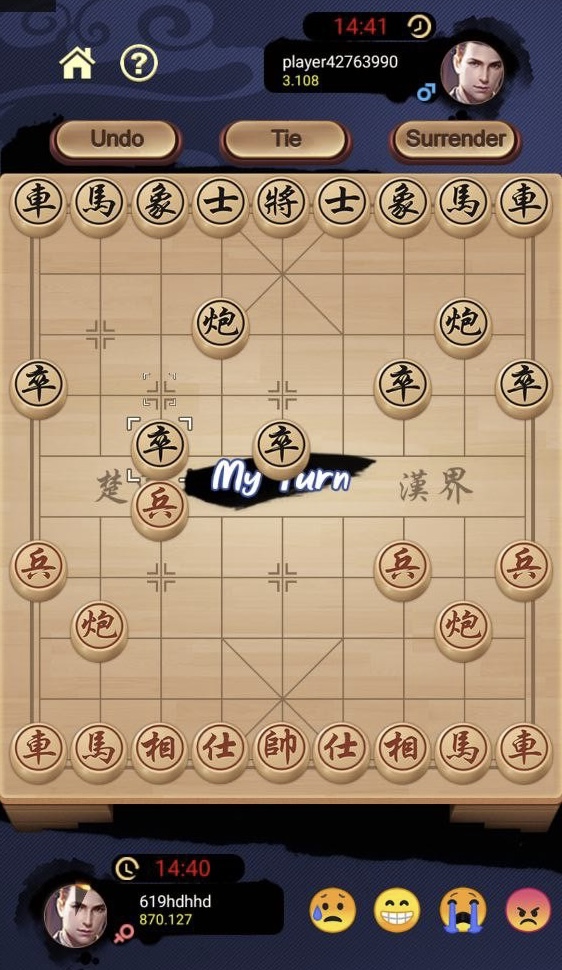
You can choose: Undo, Tie, Surrender
Pieces
The playing pieces are indicated by Chinese characters. The same ranking pieces sometimes have different characters for each side and sometimes are written in either traditional or Chinese characters. The pieces are identified below by English name, Chinese pronunciation, traditional Chinese character, simplified Chinese character if it is different, and then the character variation.
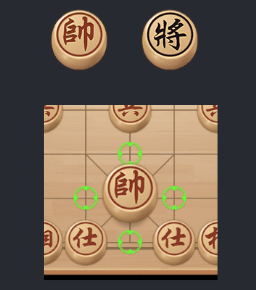
General "Shuài" (帥) and "Jiàng"(將)
Generals may move one point either vertically or horizontally, but not diagonally and is confined to the nine points within his palace. A general may not also move into a file, which is occupied by the enemy general, unless there is at least one piece positioned between the generals in the file.
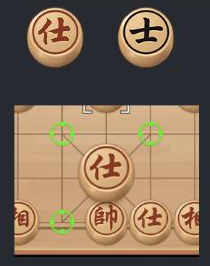
Guard/Advisor "Shi"仕 và "Shì"士
These are the king's counselors and guard the king within the palace. The guard moves one point diagonally and is confined to the palace.
.png)
Elephant “Xiàng” 相 and “Xiàng”象
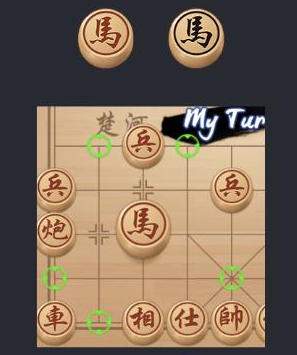
The elephants move exactly two points in any diagonal direction and may not jump over intervening pieces or cross the river.
Horse “Mà”傌/马 and“Mă”馬/马
The horse moves one point horizontally or vertically, and then one point diagonally. It cannot move in a direction where there is a piece blocking it along the path of movement.
.png)
Chariots “Ju/车 and“Jū”車/车
Chariots move similarly to the rooks in international chess. The chariot moves as many points as it wishes horizontally or vertically. It cannot jump over pieces in its path.
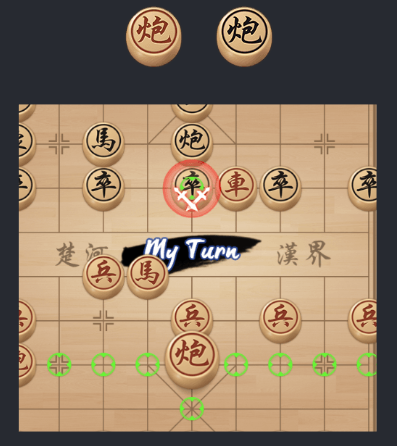
Cannons "Pào" (炮 or 砲)
Cannons move exactly like the chariot. To capture, however, a cannon must jump over exactly one piece, friend or foe, along its line of movement.
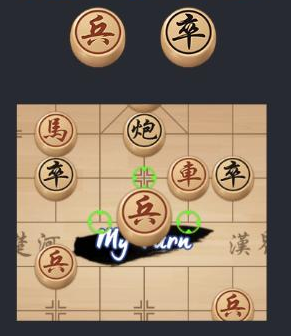
Soldier [“Bīng” 兵] and [“Zú” 卒]
Soldiers move and capture by advancing one point forward. Once a pawn has crossed the river it may also move and capture one point horizontally. A pawn may never move backward, thus retreating.
Victory is achieved when one player puts the other’s general in checkmate. Checkmate is when the other player’s general is left with no option but to be captured in the next move. When the player’s general is in danger of being captured on the next move, that general is in check, [“Jiāng” 將/将]and the player threatening capture announces it.
Wish you have fun playing game and have lots of experience with admin!
Wish you have fun playing game and have lots of experience with admin!
